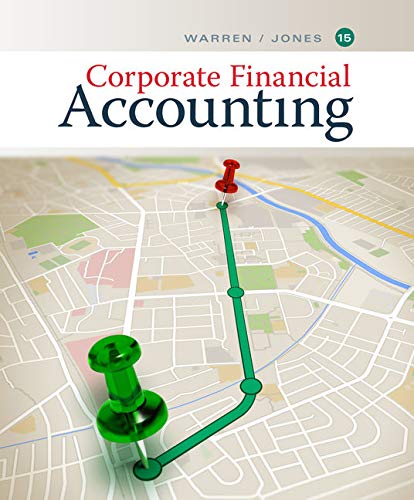
Internal Control: Internal control refers to the policies, and plans of the business organization along with other measures with a view to safeguard its assets, encourage the employees to adhere to the plans, to improve on the operational efficiency, and to ensure correct and reliable accounting information. Internal control is a process which ensures continuous reliability of accomplishment of a company’s objectives, related to operations, financial reporting, and in conformity with laws and regulations.
The following are the some of the internal control procedures:
- Competent personnel, rotating duties, and mandatory vacations
- Separating responsibilities for related operations
- Separating operations, custody of assets, and accounting
- Proofs and security measures
To state: Whether F’s handling of internal control situations are acceptable or not.
Trending nowThis is a popular solution!

Chapter 7 Solutions
Cengagenowv2, 1 Term Printed Access Card For Warren/jones’ Corporate Financial Accounting, 15th
- Hello tutor please solve this questionarrow_forwardUsing the following data: Actual direct labor-hours worked Standard direct labor rate Labor efficiency variance 6,100 hours $10 per hour $2,000 Unfavorable The standard hours allowed for December's production isarrow_forwardPlease help me this question solution general accountingarrow_forward
- Schumacher Company uses the perpetual inventory system, and it engaged in the following transactions during 2009: 1) Started the business by issuing common stock for $7,500 cash. 2) Paid cash to purchase $5,000 of inventory. 3) Sold inventory that cost $3,000 for $7,250 cash. 4) Incurred and paid operating expenses, $250. Schumacher Company engaged in the following transactions during 2010: 1) Paid cash to purchase $5,800 of inventory. 2) Sold inventory that cost $7,000 for $15,150 cash. 3) Incurred and paid operating expenses, $500. a. The gross margin for the year 2009 is b. The amount of Retained Earnings at December 31, 2009, isarrow_forwardcan you please solve this financial accountingarrow_forwardPlease help me this question solutionarrow_forward
 College Accounting (Book Only): A Career ApproachAccountingISBN:9781337280570Author:Scott, Cathy J.Publisher:South-Western College Pub
College Accounting (Book Only): A Career ApproachAccountingISBN:9781337280570Author:Scott, Cathy J.Publisher:South-Western College Pub
